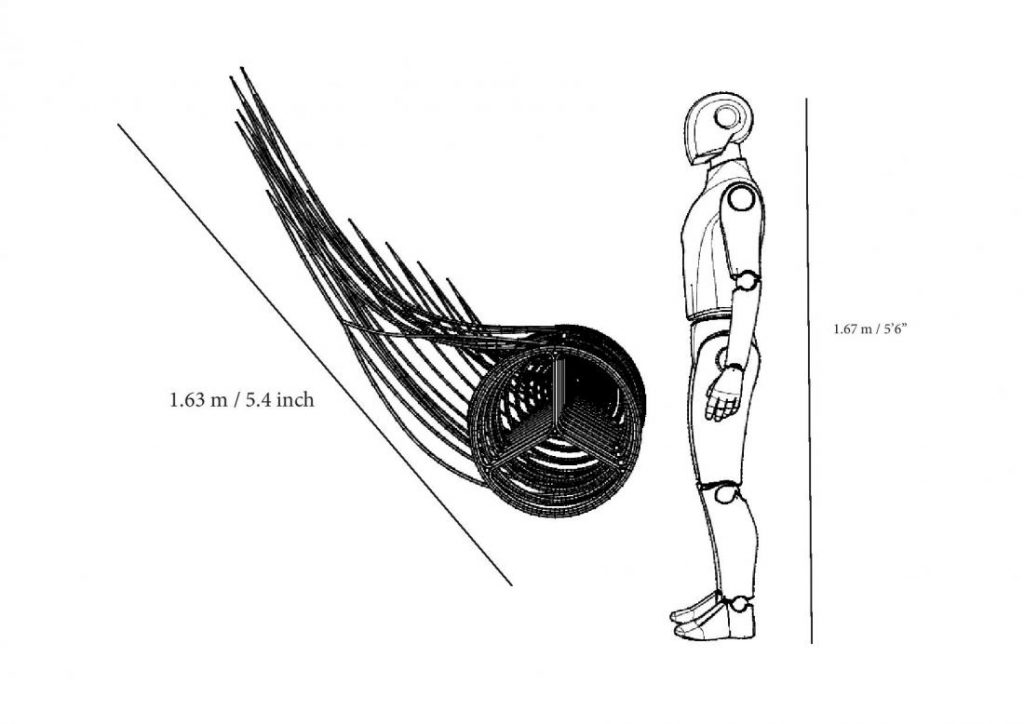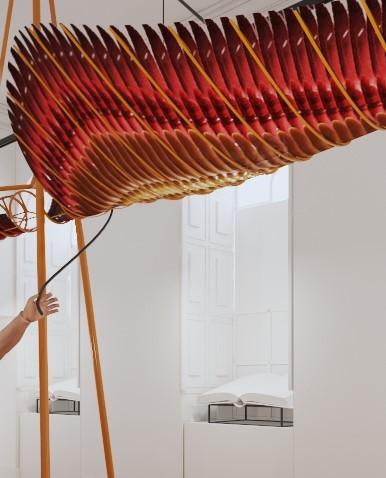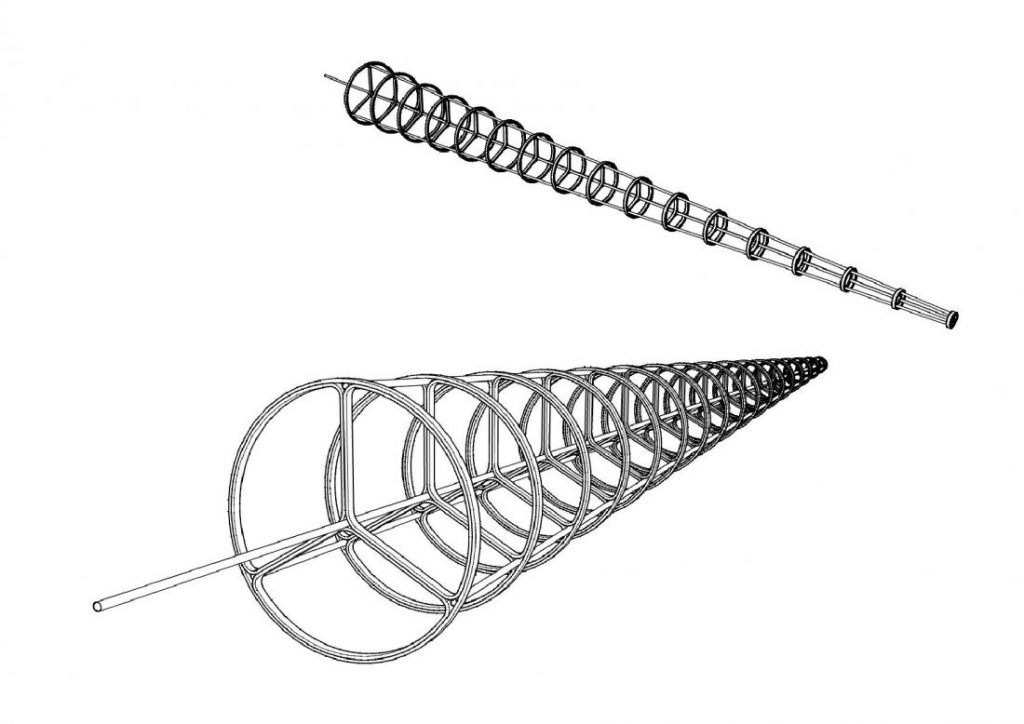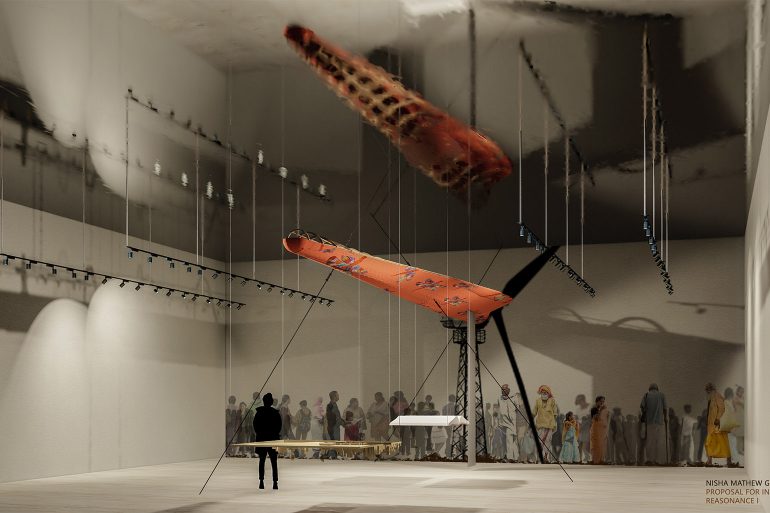The third edition of London Design Biennale was postponed from 2020 to this year following the outbreak of coronavirus pandemic. This year’s event was held in the shadow of the pandemic with the ban on international travel and restrictions on the numbers of visitors. Curator for the India Pavilion at the London Design Biennale 2021, Nisha Mathew Ghosh’s practice has included architecture and product design. The India Pavilion at the Biennale was titled ‘Small is Beautiful—A Billion Stories’ and showcased narratives of grassroots movements as a collective voice critically commenting on sustainable practices in the country. The curatorial direction for the India Pavilion 2021 is to be able to take a long glance at ideas that have developed in our country in the thresholds between design and ecology across various domains.

Can you elaborate on the opportunity of designing for a major event such as the London Design Biennale, and the experience of designing it during the pandemic?
The proposal I had sent was selected in 2019 by artistic director Es Devlin and her team. The vision was for a large installation that would engage visitors and five large books that would contain India’s stories via design: on cleanWATER, cleanAIR, cleanENERGY, cleanEARTH&FOREST. I was disappointed that with the pandemic and the related budget crunch, we had to quickly reformat the show to be only a digital one. The Mathew and Ghosh Sustainable Creation Care Foundation and Sustainability Idea Labs was able to fund the exhibition in its new modified avatar. No regrets, because the 150 stories became the hero of our showcase.
The installation makes references to clean energy, and clean air, as a two-winged structure inspired by the form of a windmill blade, and the idea of the traditional Indian fan, the punkha, that was manually moved to bring breeze.
Did the pandemic have an impact on the way you dealt with this year’s theme, ‘Resonance’? How did your interpretation of the brief evolve through the project?
We had finalised the curatorial trajectory for the India Pavilion before the pandemic. However, it seemed appropriate during this crisis to refer to a plea for cleanWATER and cleanAIR. The overall wellbeing of a restored urban ecology plays an important role in the health and immunity of a population. Everything we choose to do embedded a potential resonance, and every strategic gesture towards looking at interventions via design in the space of cleanWATER, cleanAIR or cleanENERGY and so forth, allows something to change and cause shift. The shifts must be purposeful towards a defined intention, and we need everyone to be a stakeholder in this via design or implementation or maintenance or policy.

Tell us more about ‘Small is Beautiful’. How did it best represent India on an international stage?
The criteria for the project was that it needed to be an idea that made an impact, tiny or large, on water, air, energy, earth or forest. It was vital that we have a collective voice that represents the diverse yet common trajectories via practice. Ideas have a way of growing exponentially when knowledge is shared, and this was such an opportunity. What is more vital is that we in India see the length, breadth and depth of India’s design engagement with these issues to learn and collaborate with each other, growing this shared collective body of knowledge.
You also designed an art installation for the event…
The installation makes references to clean energy, and clean air, as a two-winged structure inspired by the form of a windmill blade, and the idea of the traditional Indian fan, the punkha, that was manually moved to bring breeze. A mnemonic humorous reference to the diagram of the Vitruvius’ figure during the process of a visitor pulling the wings down (via a pulley and counterweight system) confirms the notion of an intentional will or choice via man’s action. The structure is made entirely of natural bamboo harvested from the Northeast and dyed using natural pigments. The wing-blade is softened by waste textile connected as ‘feathers’ and nuanced via embellishment. The idea of ‘wings’ imply flight, movement, a soaring up, a future.
We all agree that local is the future as far as the most sustainable approach is concerned. However, in a global world of large corporations and a hyper-capitalist thrust, we cannot go back.
How can the localisation of ideas and impact build a sustainable future?
We all agree that local is the future as far as the most sustainable approach is concerned. However, in a global world of large corporations and a hyper-capitalist thrust, we cannot go back. This is where the ‘Small is Beautiful’ strategy has value in its transformative potential to fill in the interstices with a hyper-local, truly democratic, equitable grain via projects and intentions. If this multiplies, one has the possibility of scale via multiplication—a billion ideas with everyone engaged in building the validity of the local. This is very important and this is where we have a gap. The showcase ‘Small Is Beautiful—A Billion Stories’ makes a plea of faith that ideas can build more ideas until we are able to reach critical mass. And everyone is a part of this story.
I was frankly disappointed that the art installation could not make it to the Biennale due to Covid protocols that affected its completion.
Has your multidisciplinary background informed your approach to your first curatorial project?
Perhaps it has been vital to it! It is important for my artistic practice to fluidly engage between the domains of ecology, architecture, and art—that is the way I am wired. But, importantly, it gives me a lens through which to talk about the world and express my reflections of it.

What impact did you intend the pavilion to have? What impact did it eventually have?
I was frankly disappointed that the art installation could not make it to the Biennale due to Covid protocols that affected its completion. However, it did give us the opportunity for a simpler digital showcase of the work which met the desire to share India’s ideas of sustainability via design with the world, without any other distraction in the space. If budget were not a constraint I would have preferred a more intimate setting to engage with the ideas—viewer and screen intimacy.

You’ve been carrying forward the agenda of ‘Small is Beautiful’ with your platform Sustainability Idea Labs and the talk series on your Instagram @nishamathewghosh. What do you see as the next steps in your journey towards building an ecologically resilient India?
I am working on the possibility of taking this as a showcase tour around the country which is vital for the goal of building this world of ideas. I’m also working on an allied project for students to be a part of, through optional curricula.
***
A version of this article was first published in the Indian Quarterly.

